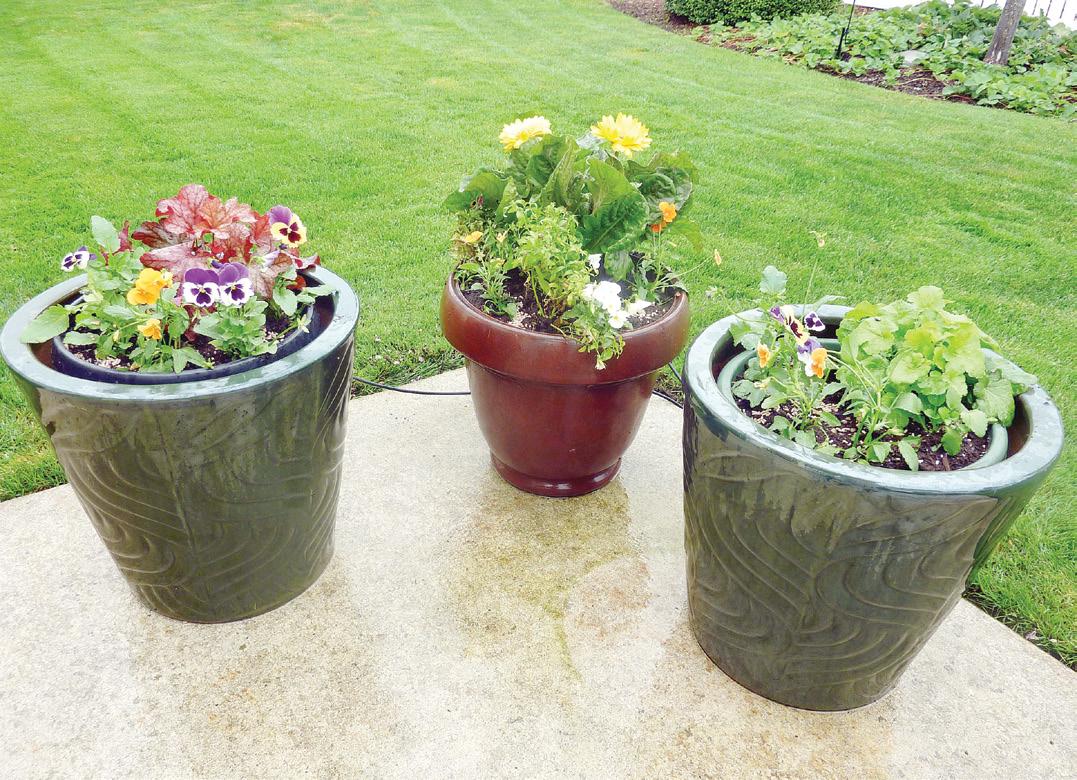
4 minute read
Have you ever tried growing mushrooms?
By shauna dobbie
The Latin name for the common white button mushroom is Agaricus bisporus. Do you prefer the brown cremini mushrooms? Then you like… the same thing but of a different variety. Portabello mushrooms, on the other hand, are… well, they are the same darn thing, grown bigger and completely open.
Advertisement
But A. bisporus is just one type of over 10,000 mushrooms currently identified in the world today. If you love mushrooms but you’re tired of A. bisporus, there are a few others you can try, and a few you can try growing. Of course, there are a few you should avoid because they are deadly, but nobody is going to sell you mushrooms that can kill you.
There are some mushrooms that grow on decaying material; these are the easiest to cultivate. And there are some parasitic mushrooms, that will eventually kill the host plant or tree they are growing on. You can cultivate a few of these, too.
But then there are mycorrhizal mushrooms, which form a symbiotic relationship with a living host. These are most often collected from the wild; they include chanterelles and porcinis. There are a few folks claiming you can grow porcinis in cardboard, but none of them are on the mushroom-growing websites. Aficionado mushroom growers all say they cannot be grown profitably.
You can purchase a mushroom kit. This is a bag, box or log pre-inoculated with mycelium (mushroom roots, more or less) that you water and keep cool and moist until they grow mushrooms. It sounds simple, but it does take some effort. The company Back to Roots makes kits that seem to work for most people.
If you’d like to go a little further with your efforts and inoculate a growing medium to grow mushrooms, here is one way to do it. I gathered the details from freshcapmushrooms.com. It is an excellent resource if you would like to go further.
Mycelium is a threadlike collection of cells that mature into fruiting bodies, mushrooms.
Scan me
Learn how to cultivate your own mushrooms at home.
https://freshcapmushrooms.com/grow-mushrooms/
DIY
The easiest mushrooms to grow are oyster mushrooms, so that is what we will do.
You will need “mushroom spawn” for this, which you can buy online from a mushroom-growing store. Here’s a tip: when Googling anything to do with growing mushrooms, add “-magic” to the search terms so you don’t get pages of results for growing psilocybin mushrooms, the ones that get you stoned.
Oyster mushrooms (various species of Pleurotus) will grow in a wide variety of substrates: hardwood sawdust or woodchips, wheat straw, coffee grounds, cardboard and many others. You must make sure the substrate is well sterilized, though, because you don’t want some other fungus to grow instead of your specific mushrooms.
Sterilization of the substrate is a challenge; you probably don’t want to boil hay. We’ll use hardwood sawdust pellets. These are sold by hardware stores for heating in a wood stove. They have the advantage that they are pretty sterile to begin with.
You will need:
10 cups hardwood sawdust pellets 20 cups boiling water 1 plastic dishpan Plastic wrap New nitrile or latex gloves 1 quart/ 1 pound oyster mushroom spawn 1 spray bottle with water 3 ½ cups vermiculite 1 see-through plastic tote, big enough to surround the dishpan; drill ½-inch holes, 2 inches apart, on all six sides
Technique:
Measure 10 cups of sawdust pellets into the dishpan. Boil 20 cups of water and pour it into the pellets. Mix

Oyster mushrooms growing from a paper bag.
it around a bit to loosen up the pellets if necessary. Cover the container with plastic wrap then wrap the whole thing in a blanket; this is to keep it warm longer.
When it has cooled completely, put on your nitrile gloves and break up your mushroom spawn into the wet sawdust. Break it up completely and mix it in well.
Lay plastic wrap directly on the mix, covering it completely. Poke holes in the plastic wrap with a knife.
Store it on a shelf out of direct sunlight where you can take a peek every day or so. If it’s dry in your house, mist it with a spray bottle to prevent drying out.
You should see the mix begin to grow a white mist or chunks of white throughout. This is the mycelium, the root-like structure of the mushrooms. Your sawdust mush has been colonized!
Now it’s time to grow the mushroom fruit.
Remove the plastic wrap and throw it out. Make sure the substrate is moist; you may want to spray it to make sure. Pour the vermiculite evenly over top the colonized mixture and spray it with water. Put the dish pan into the hole-y plastic tote and cover it with the hole-y lid. Put them back on the shelf and check them every day.
You should see “pins” start to develop. These are tiny mushrooms pushing up from below the vermiculite. Watch them grow over the next few days: they will get bigger and when the caps start to turn upward, they are ready to harvest.
Grab a cluster of mushrooms at the base and give it a twist. It will come out. You can cut off the vermiculite and use the mushrooms as you wish. Then put the dishpan back into the hole-y tote for a second flush.
After the second flush, they probably won’t produce again. You’ll need to start over, with new sawdust pellets and mushroom spawn.
If at any time in the process you see green mould start to form, your attempt has been contaminated. Throw it out and start again. h


ance Cheung. Photo by l










